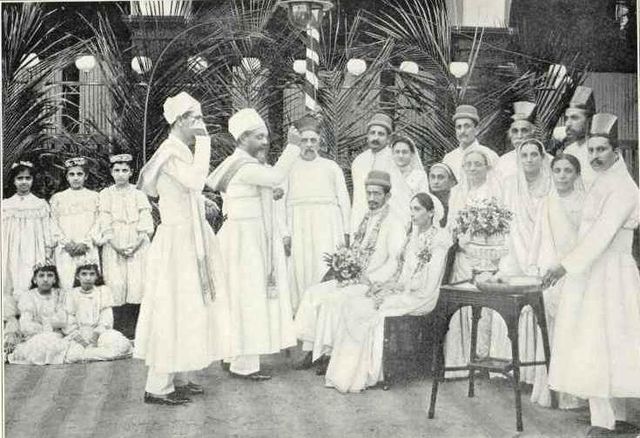Atar, Atash, Azar or Dāštāɣni, is the Zoroastrian concept of holy fire, sometimes described in abstract terms as "burning and unburning fire" or "visible and invisible fire". It is considered to be the visible presence of Ahura Mazda and his Asha through the eponymous Yazata. The rituals for purifying a fire are performed 1,128 times a year.
Iranian Fire God Adur (Atar) on a coin of the Turk Shahi king Tegin Shah, 728 CE
Atsho (Atar) on the reverse of a coin of Kushan ruler Huvishka (150-180 CE).
A Parsi-Zoroastrian Jashan ceremony (here the blessing of a home in Pune, India)
Silver coin of Ardashir I with a fire altar on its reverse (180 – 242 AD).
Zoroastrianism, also known as Mazdayasna and Behdin, is an Iranian religion. One of the world's oldest organized faiths, it is based on the teachings of the Avesta and the Iranian prophet Zoroaster. Zoroastrians exalt an uncreated and benevolent deity of wisdom, commonly referred to as "Ahura Mazda", as the universe's supreme being; opposed to Ahura Mazda is "Angra Mainyu", who is personified as a destructive spirit and the adversary of all things good. Zoroastranism combines a dualistic cosmology of good and evil with an eschatology predicting the ultimate triumph of Ahura Mazda over evil. Opinions vary among scholars as to whether Zoroastrianism is monotheistic, polytheistic, or henotheistic. Some assert that it combines elements of all three.
Atash Behram at the Fire Temple of Yazd in Iran
A Parsi Wedding, 1905
An 8th century Tang dynasty Chinese clay figurine of a Sogdian man wearing a distinctive cap and face veil, possibly a camel rider or even a Zoroastrian priest engaging in a ritual at a fire temple, since face veils were used to avoid contaminating the holy fire with breath or saliva; Museum of Oriental Art (Turin), Italy.
Ossuary with reliefs of Zoroastrian priests attending a fire, Mullakurgan (near Samarkand), Uzbekistan, 7–8th century CE.








